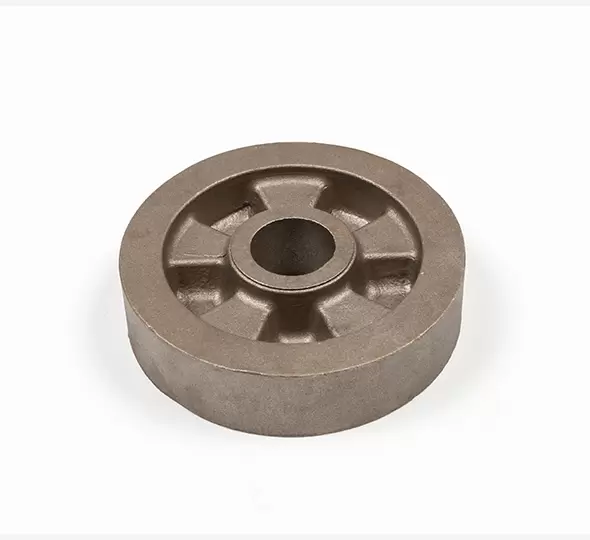Revolutionizing Automotive Manufacturing: New Energy Vehicle Steel Forging
2025-05-16
The automotive industry is undergoing a seismic transformation, driven by the increasing adoption of sustainable technologies and stringent environmental regulations. At the heart of this shift is the accelerated growth of new energy vehicles (NEVs), including electric vehicles (EVs), plug-in hybrids, and hydrogen fuel cell vehicles. These alternatives to traditional combustion-engine vehicles promise reduced emissions and enhanced energy efficiency. However, achieving these performance goals requires innovation in manufacturing processes—particularly in the production of high-performance structural components. One such innovation is new energy vehicle steel forging, a manufacturing method that plays a central role in enhancing vehicle integrity, reducing weight, and improving overall efficiency. This article Longteng explores how new energy vehicle steel forging is helping manufacturers meet the technical demands of modern NEVs.
What is the New Energy Vehicle Steel Forging?

New energy vehicle steel forging refers to the process of shaping steel components under high temperature and pressure to produce parts with superior mechanical properties. The process realigns the grain structure of the metal, leading to increased tensile strength, toughness, and resistance to fatigue. In the context of NEVs, where minimizing weight and maximizing structural integrity are essential, steel forging offers an optimal balance between durability and efficiency. Unlike casting or machining, forging enables the production of parts that can withstand the mechanical stresses and thermal cycles associated with electric vehicle powertrains, chassis, and suspension systems. It ensures that components such as control arms, axle shafts, and battery enclosure structures are both strong and lightweight—qualities vital for achieving extended driving ranges and occupant safety.
Key Advantages of New Energy Vehicle Steel Forging
1. Superior Mechanical Strength and Reliability
One of the most critical benefits of new energy vehicle steel forging is its ability to enhance the mechanical strength and fatigue resistance of vehicle components. By refining the grain flow to follow the contour of the part, the forging process reduces stress concentrations, making parts more resistant to cracking, deformation, and failure under load. This is especially important for safety-critical components in NEVs, such as forged suspension knuckles, steering links, and subframes, which must maintain their integrity under variable loads and vibrations. The consistent quality and predictability of forged parts make them ideal for applications that demand long-term performance and reliability.
2. Lightweight Construction for Energy Efficiency
NEVs rely on energy-dense battery systems, which add considerable weight to the vehicle. To compensate, manufacturers must optimize weight in other areas. New energy vehicle steel forging offers a solution by allowing thinner and lighter components without compromising structural performance. For instance, forged control arms and wheel hubs can be engineered to deliver superior load-bearing capacity while weighing significantly less than their cast or machined counterparts. Every kilogram saved in vehicle mass directly contributes to enhanced battery range and lower energy consumption, making forging an indispensable technology in lightweight design strategies.
3. Enhanced Material Utilization and Sustainability
The forging process is inherently efficient in its use of raw materials. In contrast to casting, which often involves high scrap rates and post-processing, new energy vehicle steel forging minimizes waste and maximizes yield. Near-net-shape forging techniques allow for tighter dimensional tolerances and reduced machining needs, cutting down both energy consumption and production costs. Additionally, the recyclability of forged steel components aligns with the circular economy principles embraced by NEV manufacturers. By reducing raw material waste and optimizing energy use during production, steel forging supports the sustainability goals of the entire automotive value chain.
4. Flexibility in Design and Customization
Another significant advantage of new energy vehicle steel forging lies in its ability to accommodate complex and customized part geometries. Through closed-die or precision forging, manufacturers can produce components with intricate shapes and internal features that are difficult to achieve using other methods. This design flexibility allows engineers to integrate multiple functions into a single forged component, reducing assembly complexity and potential failure points. Whether for high-strength battery trays, specialized motor housings, or aerodynamic chassis components, forging enables precise tailoring of parts to the performance and space constraints of NEVs.
5. Safety Enhancement and Impact Resistance
Safety is paramount in new energy vehicles, particularly because their architectures differ significantly from traditional internal combustion engine vehicles. The strategic use of forged steel components strengthens the structural cage of the vehicle, enhancing crash resistance and energy absorption during impacts. For example, forged steel is often used in crash-critical zones such as front and rear suspension links, crossmembers, and steering system elements. The inherent ductility and strength of forged parts ensure that they deform in predictable ways under stress, protecting passengers and critical systems such as battery packs.
As the global shift toward electrification accelerates, the need for lightweight, durable, and cost-effective components becomes increasingly urgent. New energy vehicle steel forging addresses this demand by delivering robust solutions that enhance performance, ensure safety, and reduce environmental impact. By leveraging the benefits of forged steel—improved mechanical properties, efficient material usage, and design adaptability—manufacturers can overcome the engineering challenges associated with NEVs. The forging process will continue to be a cornerstone of advanced vehicle production, ensuring that electric and hybrid models meet the high standards expected in the modern automotive landscape. In a market driven by innovation and sustainability, new energy vehicle steel forging remains a critical enabler of progress—providing the strength behind the wheels of the electric revolution.





















 Email
Email